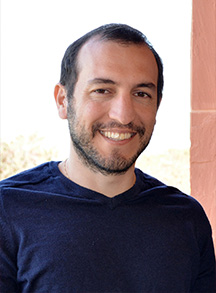Scientists Use ‘Molecular Autopsies’ to Find Clues to Sudden Death
Sudden death strikes approximately 11,000 people under age 45 in the U.S. every year, leaving living relatives with troubling questions about their own risk. Unfortunately, with many conditions—such as sudden infant death syndrome (SIDS) and sudden cardiac death (SCD)—the cause of death is not always apparent after a traditional clinical autopsy.
Now a new study led by scientists at The Scripps Research Institute (TSRI) and the Scripps Translational Science Institute (STSI) suggests that “molecular autopsies” may be valuable in detecting gene mutations responsible for a sudden death. The research, while preliminary, could help doctors alert living family members to hidden health conditions.
The research, led by Ali Torkamani, assistant professor of molecular and experimental medicine at TSRI and assistant professor and director of genome informatics at STSI, was published October 11, 2016, in the Journal of the American Medical Association (JAMA).
“The key takeaway is that molecular autopsy, when performed in a prospective and family-based manner, can reveal the genetic cause of sudden death in a variety of conditions and provide useful information regarding risk to living relatives,” Torkamani said.
For the study, the researchers sequenced samples from 25 sudden death cases. To assess possible inherited mutations, the team also sequenced samples from the deceased patients’ parents in nine of the cases.
This analysis provided clues that weren’t apparent in traditional clinical autopsies. In four cases, the researchers found that a genetic mutation was a “likely” cause of death, and they found six more cases where a mutation was a “plausible” cause of death. In seven cases, a mutation was found to be a “speculative” cause of death.
Overall, molecular autopsies uncovered a likely or plausible cause of death in 40 percent of cases. Interestingly, many of the findings were variants of genes inherited from relatives who had not suffered from the syndrome.
The researchers believe identifying possible genetic mutations behind sudden death could help doctors and family members plan for clinical follow-ups, preventative measures and active surveillance to watch for symptoms—even in cases where the mutation was just a “speculative” cause of death.
The researchers said larger studies are needed to collect enough data to provide living relatives with a better idea of their risk.
In addition to Torkamani, authors of the study, “Molecular Autopsy for Sudden Unexpected Death,” included Eric J. Topol, Evan D. Muse, Emily G. Spencer and Manuel Rueda of TSRI and STSI; and Glenn N. Wagner and Jonathan R. Lucas of the Medical Examiner Department of San Diego County.
The study was supported by a National Institutes of Health and National Center for Advancing Translational Sciences clinical and translational science award (5-UL1-RR025774) and Scripps Genomic Medicine (grants U01HG006476 and U54GM114833).
Send comments to: press[at]scripps.edu














